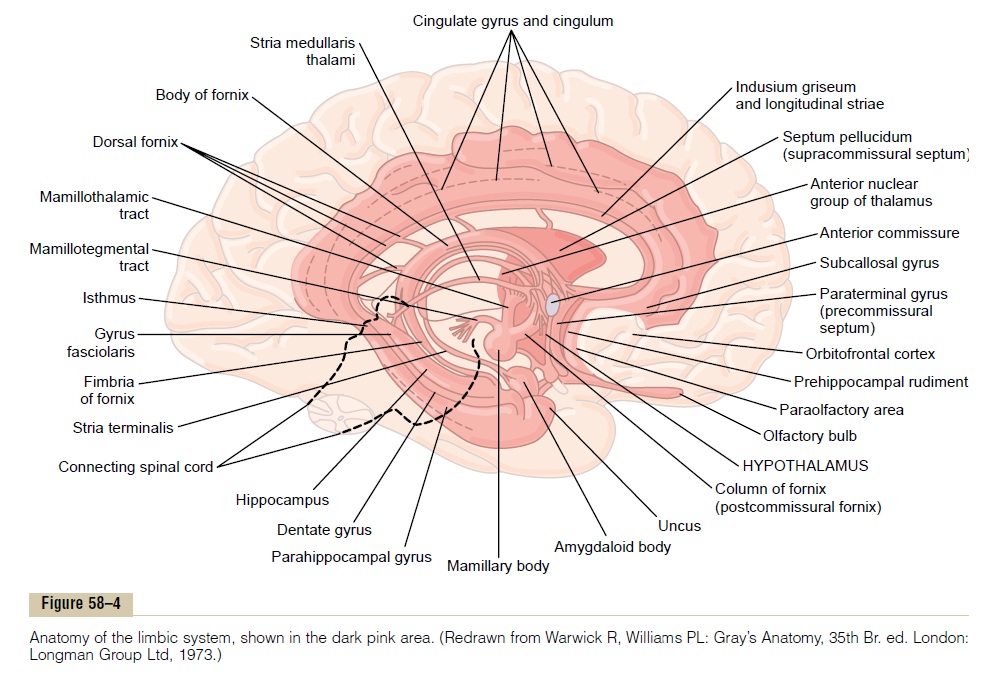Chapter: Medical Physiology: Behavioral and Motivational Mechanisms of the Brain-The Limbic System and the Hypothalamus
Functional Anatomy of the Limbic System; Key Position of the Hypothalamus
Functional Anatomy of the Limbic System; Key Position of the Hypothalamus
Figure 58–4 shows the anatomical structures of the limbic system, demonstrating that they are an inter-connected complex of basal brain elements. Located in the middle of all these is the extremely small hypo-thalamus, which from a physiologic point of view is one of the central elements of the limbic system. Figure 58–5 illustrates schematically this key position of the hypothalamus in the limbic system and shows sur-rounding it other subcortical structures of the limbic system, including the septum, the paraolfactory area, the anterior nucleus of the thalamus, portions of thebasal ganglia, the hippocampus, and the amygdala.

And surrounding the subcortical limbic areas is the limbic cortex, composed of a ring of cerebral cortex ineach side of the brain (1) beginning in the orbitofrontalarea on the ventral surface of the frontal lobes, (2)extending upward into the subcallosal gyrus, (3) then over the top of the corpus callosum onto the medial aspect of the cerebral hemisphere in the cingulategyrus, and finally (4) passing behind the corpus callo-sum and downward onto the ventromedial surface of the temporal lobe to the parahippocampal gyrus anduncus.

Thus, on the medial and ventral surfaces of each cerebral hemisphere is a ring of mostly paleocortex that surrounds a group of deep structures intimately associated with overall behavior and emotions. In turn, this ring of limbic cortex functions as a two-way com-munication and association linkage between the neo-cortex and the lower limbic structures.
Many of the behavioral functions elicited from the hypothalamus and other limbic structures are also mediated through the reticular nuclei in the brain stem and their associated nuclei. It was pointed out as well as earlier that stim-ulation of the excitatory portion of this reticular for-mation can cause high degrees of cerebral excitability while also increasing the excitability of much of the spinal cord synapses. We will see that most of the hypothalamic signals for controlling the autonomic nervous system are also transmitted through synaptic nuclei located in the brain stem.
An important route of communication between the limbic system and the brain stem is the medial forebrain bundle, which extends from the septal andorbitofrontal regions of the cerebral cortex downward through the middle of the hypothalamus to the brain stem reticular formation. This bundle carries fibers in both directions, forming a trunk line communication system. A second route of communication is through short pathways among the reticular formation of the brain stem, thalamus, hypothalamus, and most other contiguous areas of the basal brain.
Related Topics